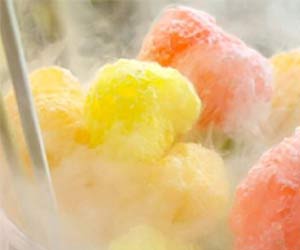
Researchers studied beverage consumption among 7,445 students who were part of the Early Childhood Longitudinal Study, Kindergarten Class of 1998-1999 (ECLS-K), a nationally representative study of children from kindergarten to 8th grade. The children filled out a food consumption questionnaire in the 5th and 8th grades that included questions about how much and how frequently they consumed milk, 100% fruit juice, and sweetened beverages. Investigators compared the data to measure changes in consumption over time. The analysis accounted for demographic characteristics and socioeconomic status and factors such as public versus private school attendance, whether the child ate school lunch or breakfast regularly, and whether the child received free or reduced-price lunch at school. Other nutrition indicators included were changes in consumption of vegetables, fruits, and fast food.
Overall, children's reported caloric drink servings per week fell significantly between 5th and 8th grade. Milk consumption fell while consumption of 100% fruit juice increased, regardless of sweetened beverage consumption. Milk consumption fell more among children who drank any sweetened beverages than among those who drank none. The decline in milk consumption was even larger among children who drank sweetened beverages daily; that group drank an average two fewer glasses of milk in the 8th grade than they had in the 5th grade. Children who drank sweetened beverages were more often male and white. Those who drank sweetened beverages daily more often attended public school, ate school lunch or breakfast regularly, and received a free or reduced price school lunch.
However, controlling for demographic and nutrition characteristics, changes in children's milk and juice consumption were not significantly related to changes in their consumption of sweetened beverages over time, indicating that sweetened beverages did not replace other caloric beverages in children's diets. Children who increased their milk consumption also increased their juice consumption over the three-year period, indicating that milk and juice are complements, not substitutes, in children's diets. "Analysis of multiple subpopulations indicates that milk and juice consumption increased or decreased in tandem for most children," says Dr. Oza-Frank.
Of concern, Dr. Oza-Frank notes, is that as children increase their intake of one high caloric beverage, they also increase their intake of others. "It's important for [food and nutrition practitioners] to help children and families understand that caloric beverages, even those that are generally healthful, contribute to children's total calorie intake and must be moderated as a part of a healthy diet," she says.
Advertisement













